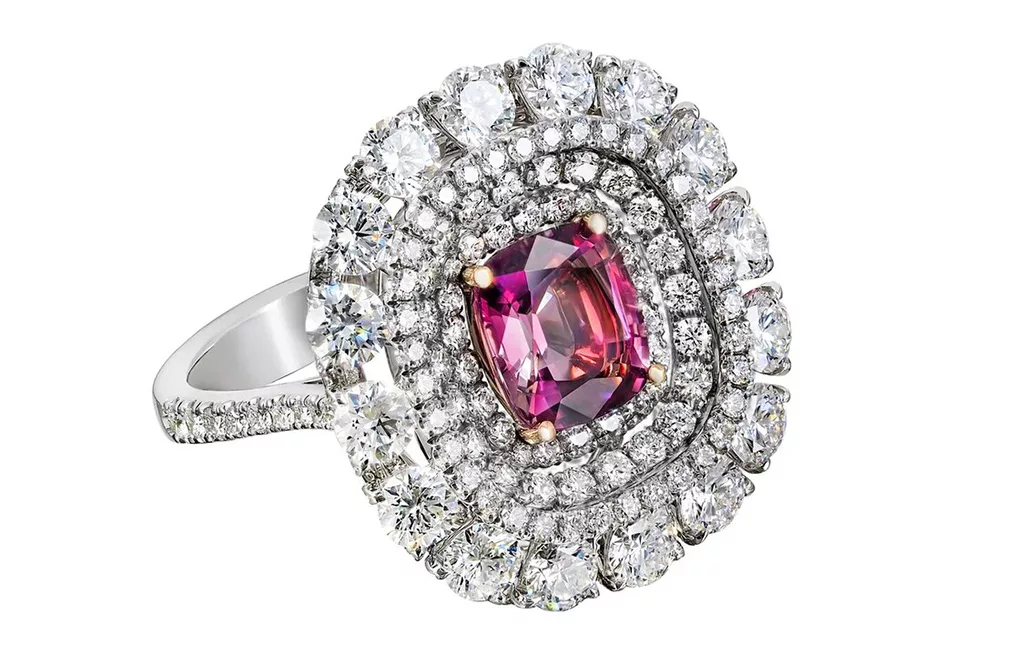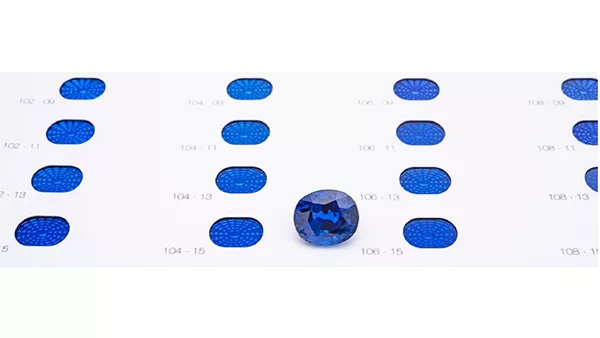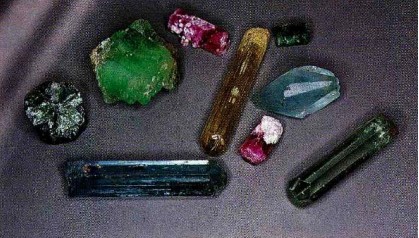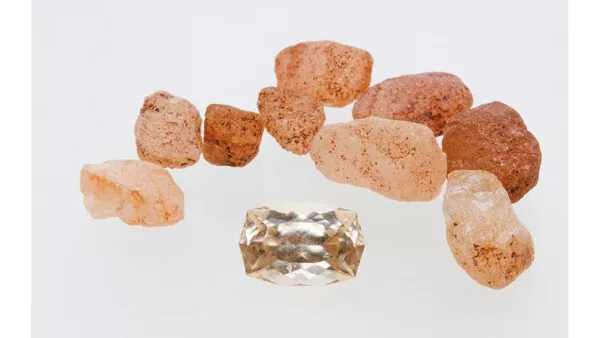
A gemmologist’s delight: poudretteite, musgravite, taaffeite, and grandidierite
by Dr. M.S. Krzemnicki, first published in Facette 27 (June 2021)

In recent months, the SSEF received again a number of very rare collector stones for testing. These included poudretteite, musgravite, taaffeite, and grandidierite of exceptional quality.
Poudretteite, ideally KNa2B3Si12O30, is a very rare cyclosilicate. It was first discovered in the mid-1960s in the famous mineral locality Mount St. Hilaire, Quebec, Canada. These tiny crystals were recognized as a new mineral only about 20 years later (Grice et al. 1987). It was named after the Poudrette family, who operated the quarry which to this day is famous as an occurrence of various unique and rare minerals. Since 2000, this rare borosilicate is also known from Mogok (Myanmar). To date only very few gem-quality stones of slightly pink to saturated purplish pink colour have been found in Mogok, usually of rather small size (Smith et al. 2003).

The poudretteite submitted for testing was set in a ring together with colourless diamonds (Fig. 1). The stone of 1.53 ct (declared weight) was characterized by a beautifully saturated purplish pink colour and an excellent purity. Its well-proportioned cutting style resulted in vivid pink to purple hues due to multiple internal reflections, a consequence also of the distinct pleochroism of poudretteite.
Our analyses of this gem were highly consistent with chemical and spectroscopic data published for poudretteite from Mogok (Smith et al. 2003). The attractive puplish pink colour is related to a broad absorption band at about 530 nm (in the o-ray spectrum, Figure 2). This absorption band might be linked to traces of manganese, which was found as a trace element (about 150 ppm Mn) in our sample. It is well known that manganese can lead to pink to purple colours in silicates such as tourmaline, beryl (morganite, red beryl), grossular garnet, and spodumene (kunzite), as well as rhodonite and is even presumed to cause the subtle purple colours of lavender jadeite (Ren Lu, 2012). In light of this, more research about poudretteite would be desirable in order to better understand not only the cause of its colour, but also how it forms and why it is so rare.

Two other rare encounters in the gem trade are taaffeite and musgravite, which can only be separated by sophisticated analysis. Taaffeite, ideally BeMg3Al8O16, is a very rare collector mineral named after Mr Richard Taaffe, who by chance discovered the first specimen in 1945 in a jewellery shop in Dublin (Ireland). Due to its visual appearance, the specimen was offered to him as a spinel and only after his lucky discovery was it described as a new mineral species. To date, it is the only mineral which was first discovered as a faceted gemstone! In contrast to this, musgravite, ideally BeMg2Al6O12, is named after the type locality Musgrave Range in central Australia where it was first discovered in 1967.
Although renamed to magnesiotaaffeite-2N’2S (formerly taaffeite) magnesiotaaffeite-6N’3S (formerly musgravite) due to structural considerations, the original names taaffeite and musgravite are still commonly used in the gem trade and evoke appreciation by collectors worldwide.
Both gem-quality taaffeite and musgravite are found in a range of colours from colourless to purple and purplish grey to greenish grey, with purple being the most appreciated colour.
They are rare in gem-quality and have been found mostly in small sizes in Sri Lanka, Tanzania, Madagascar, and Mogok (Myanmar). In the past few months, the SSEF had the chance to analyse few taaffeites and a musgravite of exceptional quality (Figure 3).

Interestingly, the colour of most of our analysed specimens is related to iron (Fe), resulting in absorption spectra similar to Fe-bearing Mg-Al spinels of purple to greyish purple colour with a Fe-related absorption maximum at about 555 nm. With the presence of chromium, the colour shifts to a more pronounced purplish red due to an additional chromium-related absorption band at about 540 nm (and occasionally small characteristic Cr-absorption lines at 685 nm) (see Figure 4). Similar spectral comparisons were already documented by Schmetzer et al. 2000, and by this author in 2017 in SSEF Facette 23, page 9.

And finally, we received in the past few months two faceted grandidierite specimens of 3.5 and 7.5 ct for testing. Grandidierite (Mg,Fe2+)Al3BSiO9 is a rare aluminium boro-silicate and forms a solid solution series with its iron-dominant analogue ominelite by substituting Mg2+ with Fe2+ (Dzikowski et al. 2007). Gem-quality grandidierite is so far only known from Sri Lanka (Schmetzer et al. 2003) and Madagascar (Vertriest et al. 2015, Bruyère et al. 2016) close to the town of Tranomaro (see also SSEF Facette No. 24, 2018). Its attractive greenish blue colour is related to the presence of low amounts of iron.
The two attractive specimens were meticulously investigated using advanced analytical methods (including GemTOF, see www.gemtof.org), as such samples offer the rare opportunity to gain more data about this rare mineral and gemstone. Plotting our chemical data with published Mg-Fe ratios (Bruyère et al. 2016 and references therein) reveals that these two specimens originated from Madagascar.

In summary, to be able to study gemmological rarities of such fine quality is a dream come true for any gemmologist and especially for our gem experts at SSEF. As such, these specimens offer plenty of new scientific insights into the colourful world of minerals and gems.


